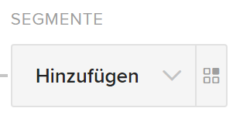User-defined dimensions (own segments)

by Katrin Nebermann
User-defined dimensions (own segments)
The standard etracker code on the websites automatically collects a series of data points that can later be used for analysis. These include:
- Page name (URL, navigation path and page title)
- Information about the device used (browser, device type, etc.)
- Information about the origin of the user (location and referrer)
Information on products or specific page content that is viewed or interacted with can be enriched via eCommerce, event or onsite campaign tracking.
The user-defined dimensions (called custom segments in etracker Analytics) can contain additional information to describe the content of the page, the status of the current session or visitor characteristics. Examples of own segments are
- At page level: Creation date, author and keywords of posts
- At visit level: Login status
- At visitor level: user ID, customer group
Under Settings → Account → Custom segments, you define which custom segments you want to use by entering a segment name and specifying the segment type (user, page impression, session). You also have the option of setting up aliasing for the transferred segment values in order to be able to transfer a pseudonym (e.g. 1 for woman) in the parameter instead of the clear name.

The segment information is transferred as a parameter in the parameter block of the etracker code on the respective page, as a URL parameter or with the wrapper call.
The created segments are available in the reports in the segment selection at the bottom right in the Custom group and can be called up in the interface in combination with other dimensions, in e-mail reports, via REST interface or raw data export.

By default, the Enterprise Edition has five separate segments with any number of characteristics. Additional segment dimensions are available on request.


